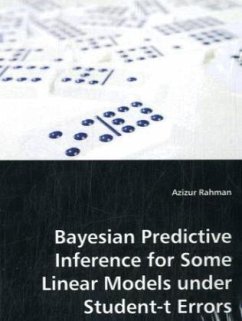
Intensity-Based Credit Risk Models
A Brief Overview
Versandkostenfrei!
Versandfertig in 6-10 Tagen
39,99 €
inkl. MwSt.

PAYBACK Punkte
20 °P sammeln!
Credit risk, refering to the risk that an obligor does not honor his payment obligations, has become one of the most discussed issues in contemporary quantitative finance. This is not only related to the regulatory requirements of the Basel Accords, but also to the remarkable growth of credit derivatives as well as to the controversially discussed securitization of debt within the subprime crisis. To be able to quantify and manage the arising credit risk successfully, much effort has been put in developing reliable models, which can be classified into two main streams, structural and intensity...
Credit risk, refering to the risk that an obligor does not honor his payment obligations, has become one of the most discussed issues in contemporary quantitative finance. This is not only related to the regulatory requirements of the Basel Accords, but also to the remarkable growth of credit derivatives as well as to the controversially discussed securitization of debt within the subprime crisis. To be able to quantify and manage the arising credit risk successfully, much effort has been put in developing reliable models, which can be classified into two main streams, structural and intensity-based models. This book aims at providing a general overview of latter kind of model class from a theoretical viewpoint, by explaining the fundamental concepts and methods and presenting some of the models which essentially have embossed the popularity of the intensity framework. In doing so, the focus is set on modelig the default of a single obligor. However, different possibilities to incorporate a dependency structure into the intensity-based setting are briefly discussed as well. Finally, the approach of correlated intensities is applied to price a CDS when counterparty risk is present.












